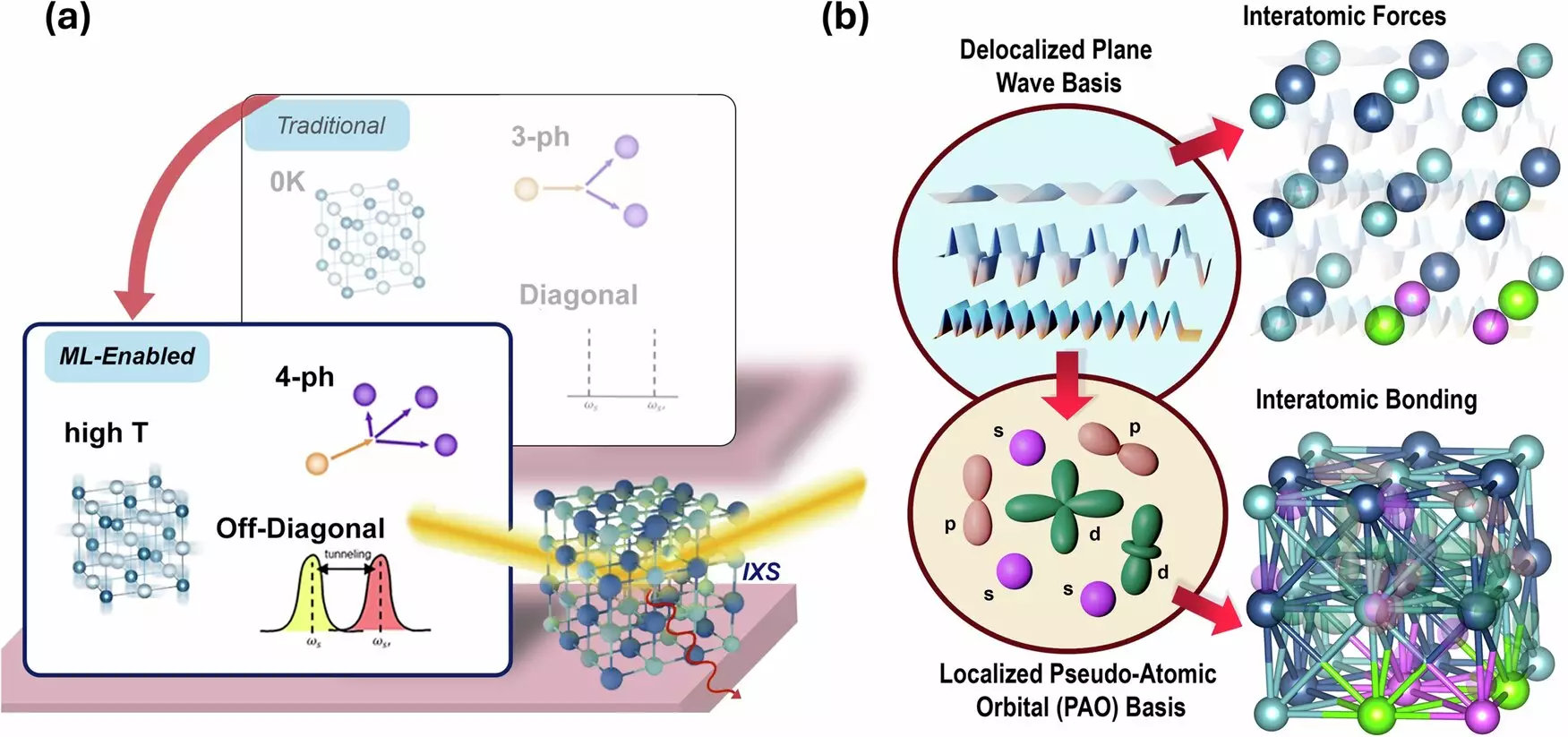The exploration of phase-change materials (PCMs) has garnered significant attention in recent years, particularly within the context of thermoelectric energy conversion and advanced electronics. Among these materials, germanium telluride (GeTe) stands out due to its unique properties that allow for marked alterations in thermal and electrical conductivity depending on its phase state. Researchers have observed an unsolved enigma: an unexpected increase in lattice thermal conductivity within the cubic phase of GeTe as the temperature rises. Recent research from Cornell University, however, takes a substantial step towards elucidating this puzzling behavior through innovative applications of machine learning and cutting-edge X-ray techniques.
Led by Zhiting Tian, an associate professor at the Sibley School of Mechanical and Aerospace Engineering, the research team sought not only to identify the existence of the increasing thermal conductivity phenomenon but also to discern the underlying mechanisms responsible for it. Through meticulous experimentation and analysis, they discovered that as GeTe transitions from a rhombohedral to a cubic structure upon heating, the bonds between second-nearest neighbors—specifically the Ge-Ge and Te-Te bonds—exhibit a notable increase in strength. Effectively, this strengthening of bonds is responsible for the observed enhancement in thermal conductivity.
More specifically, their results revealed an 8.3% increase in the strength of Ge-Ge bonds and an astonishing 103% boost in Te-Te bonds as the temperature escalated from 693 Kelvin to 850 Kelvin. Such findings not only resolve a long-standing mystery in the thermal behavior of GeTe but also offer a window of understanding into the intricate dynamics of thermal transport mechanisms in PCMs.
One of the key aspects that differentiate this study from prior research is the amalgamation of advanced computational techniques. The researchers employed machine learning-assisted first-principles calculations, corroborated by X-ray scattering measurements, to reproduce the trends of thermal conductivity accurately. This dual approach allowed for a comprehensive examination of temperature effects and higher-order scattering phenomena, areas that have posed challenges in computational materials science.
Tian noted the significance of leveraging machine learning in this context, which considerably eased the computational burden associated with examining temperature dependencies and multi-dimensional interactions, including four-phonon scattering and coherence contributions. This novel methodology not only confirms the bond strength changes but also positions machine learning as a pivotal tool in future materials research, particularly in scenarios dominated by phase transitions.
Beyond the immediate implications of understanding GeTe’s behavior, this research carries substantial weight in the pursuit of environmentally friendly and high-performance thermoelectric materials. With GeTe being highlighted as a potential alternative to the hazardous lead telluride previously used in thermoelectric applications, the study advances the conversation toward safer and more sustainable energy solutions.
The findings suggest that other materials, such as tin-telluride and tin-selenide, might exhibit similar enhancements in conductivity. By identifying such materials, the research contributes to the broader goal of discovering viable, non-toxic thermoelectric materials that can be integrated into future energy systems, thereby advancing both technological innovation and sustainability.
The work done by Tian and her colleagues marks a significant stride in the field of materials science, particularly in understanding the properties of phase-change materials such as germanium telluride. The innovative use of machine learning combined with experimental validation through X-ray scattering opens up new avenues for accurately modeling thermal transport phenomena in PCMs. This research not only sheds light on the unexpected thermal conductivity behavior of GeTe but also sets the stage for further exploration into other materials with similar qualities. As the global demand for sustainable energy solutions continues to grow, such insights may prove invaluable in steering us towards more efficient and environmentally-friendly technologies.


Leave a Reply